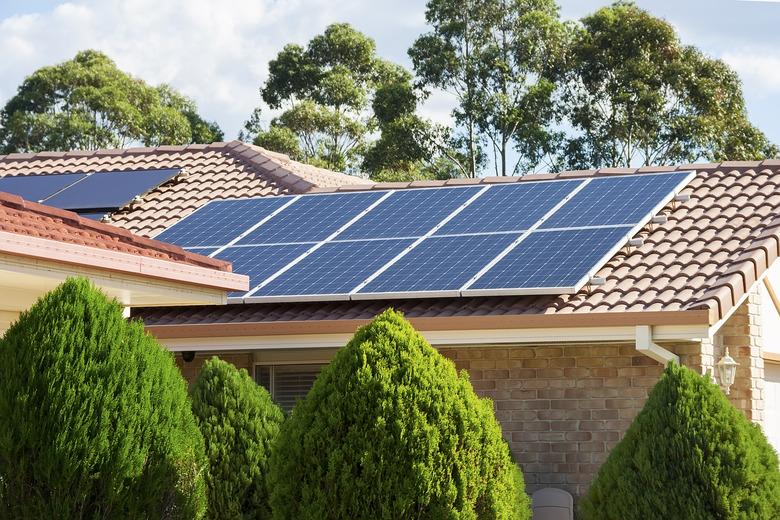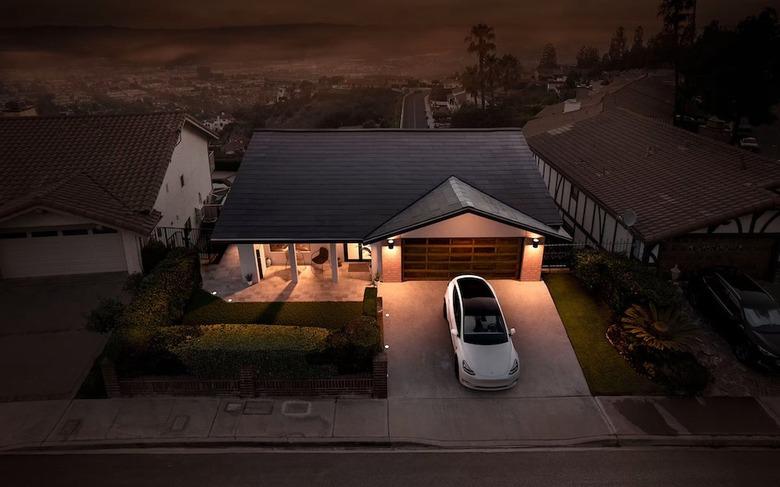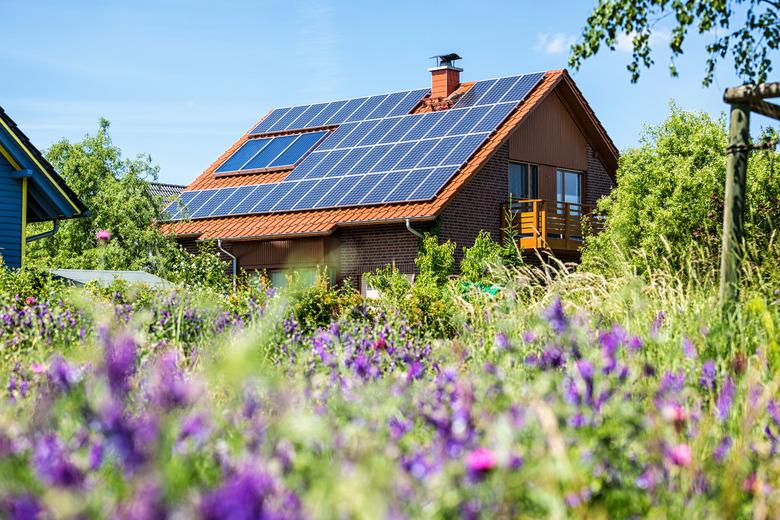Solar Roof Shingles Vs. Solar Panels: Which Is Right For You?
In the not too distant past, homeowners considering investing in solar energy for their homes could choose only from the available brands of solar panels, but since 2005, they can now also opt for solar roof shingles. Aesthetically speaking, solar shingles are a step up from the somewhat clunky appearance of large black panels looming over the roofline or taking up space in the backyard, but visual elegance is just one consideration. Many others, which are just as important or more so, are financial.
The top considerations for most homeowners usually boil down to the installation costs, the maintenance costs, and the potential effect on the electric bill, and that's assuming the house is a good candidate for solar roof shingles. Some aren't by virtue of their orientation or roof design or because of environmental factors, including climate zone and surrounding shade trees.
Moreover, traditional solar panels tend to be more widely available than photovoltaic shingles, which are still being improved by the relatively small number of manufacturers that offer them. Because the technology for solar roof shingles is under development, it can be difficult to find a contractor to install them. In spite of all this, solar roof shingles can be an excellent investment, especially for someone considering replacing their existing roof.
Solar Roof Shingles Are Mini Panels
Solar Roof Shingles Are Mini Panels
Solar panels, solar roof shingles, and solar roof tiles, which are similar to shingles, all generate electricity in essentially the same way. Each unit is composed of an array of individual solar cells that use a semiconducting material that converts incident sunlight into electrical current and voltage. The semiconductor in panels and rigid solar tiles is monocrystalline or polycrystalline silicon, while shingles have a "thin film" coating containing a combination of copper indium gallium selenide or cadmium telluride, which allows them to be as flexible as asphalt shingles.
True solar shingles are approximately the same width as asphalt shingles, typically measuring 12 inches wide and 86 inches long and weighing about 13 pounds per square foot. They can be incorporated into an existing roof or used on their own as a roof covering, with either strategy producing a building-integrated photovoltaic (BIPV) system. Flexible shingles have a typical energy conversion efficiency of 12 to 15 percent compared to 20 to 22 percent for rigid panels.
Solar roof tiles are rigid like solar panels, but unlike panels, they aren't mounted on brackets but are incorporated into the existing roofing, and unlike shingles, they seldom cover the entire roof. Tile systems typically come with a frame and flashing that ties into a conventional roof system, but they act as a roof covering for the part of the roof they cover. The Tesla solar roof is an amalgam of solar shingles and tiles. The modular shingles are rigid, and the company employs quartz crystals instead of silicon ones, which boosts the power output by 22 percent, according to Electrek.
Effect on Real Estate Value
Effect on Real Estate Value
When it comes to aesthetics, the advantage solar shingles have over solar panels is obvious. They sit flush on the roof and create no disturbing obstacles to the line of sight, whereas panels can't help but be obtrusive. Some people might consider this more important than others who don't mind the appearance of panels, but there's no doubting the appeal of a BIPV system that allows a building to appear to produce its own energy, and it's definitely a selling point. The fact that solar roof shingles sit flush on the roof also makes them more resistant to adverse weather conditions than panels, which sit on frames that can make them more vulnerable to high winds.
Sunrun estimates that any solar installation, whether it be panels or shingles, increases a home's value $4,000 to $6,000 for every kilowatt the system produces. In this regard, panels enjoy an advantage because they produce more power per unit than shingles. A typical panel measures about 65 x 39 inches (about 18 square feet), and these days, one can generate about 250 watts on average. A 12 x 86-inch shingle with an area of around 7 square feet, on the other hand, generates 13 to 63 watts, so you need four to 20 shingles to get the same output as a single panel depending on how efficient the product is. That means the shingles have to cover a roof area of roughly 28 to 135 square feet to provide the same amount of electricity as a single 250-watt conventional panel.
Realistically, the power output from a solar panel system should be in the neighborhood of 6 kW to supply a 1,500 square-foot home, which would mean an array of shingles with a power output on the low end of the scale would have to cover almost 900 square feet. Most roofs have more than enough space for this, but not all the roof space is usable. Only a portion of any roof is south-facing, and some of that may be shaded by other parts of the roof. Keep in mind that unlike panels, solar roof shingles can't be adjusted to face the sun. Depending on your roof, you may have to install more expensive shingles with the highest power outputs to eliminate your electric bill.
Comparing Costs: Panels vs. Shingles
Comparing Costs: Panels vs. Shingles
It can be confusing to compare the cost of installing solar panels to that of installing solar shingles because panels are usually priced on a per-watt basis, while shingles — which are, after all, a roof covering — are often priced by the square foot. However, Solar Panels Network estimates the cost of installing solar roof tiles to be between $3.80 and $9 per watt. That's more expensive than panels, which cost only about $2.76 per watt on average.
Part of the reason for the higher price tag is the fact that the cost of solar shingle installation usually includes the cost of the new roof. Installation of a Tesla solar roof, which is the gold standard for solar shingle systems, calls for modifications to the roof structure, which is why it's the most expensive option available and can cost $70,000 to more than $100,000. Installation of other brands of solar shingles and tiles usually costs between $15,000 and $20,000. Installation of conventional solar panels, on the other hand, may also involve installing a new roof, but it doesn't have to. You can install panels on an existing roof or somewhere in the yard.
Whether installing shingles or panels, homeowners can usually take advantage of tax breaks and rebates, including the federal solar tax credit of 26 percent, which reduces to 22 percent at the end of 2022. This can make shingles more attractive to homeowners who are considering a roof replacement because the incentives can help make the entire roof installation more cost-effective. Homeowners installing solar panels as part of a new roof can also get incentives, and because solar shingles are an actual roof covering, they take the place of conventional roofing wherever they're installed, which means additional savings.
What's Involved With Installation?
What's Involved With Installation?
It takes more than panels, shingles, or tiles to bring renewable energy to your house and help reduce your dependence — as well as that of the entire country — on fossil fuels. The panels or shingles have to be connected together and fed to an inverter, which converts the DC output to usable AC current and feeds the home's electrical panel. In addition, a battery backup is needed if you want the system to provide energy when the sun isn't out. Shingle and tile systems, such as the Apollo II system from CertainTeed, are modular, and the wires are hidden underneath them and fed through a hole in the roof. The wires for solar panels, on the other hand, are often exposed and can be damaged or disconnected by severe weather or gnawing rodent pests.
Whereas the frames for solar panels can be mounted on an existing roof, they can't be mounted on every type of roofing, so solar panel installation may call for new roofing. Solar shingles and tiles, on the other hand, always call for replacement of the roof covering, and they don't work on every roof. The roof needs a minimum pitch (for the Apollo II system, it's 4:12), and the cost of the shingle installation increases with roof complexity. After being sued for underestimating installation costs, Tesla established a three-tier system for roof complexity that accounts for simple, intermediate, and complex roofs.
Because they are more durable, the manufacturer's warranty period for solar roof shingles and solar tiles tends to be longer than that for solar panels. After optimistically guaranteeing Tesla's panels for "infinity," Tesla CEO Elon Musk has downgraded the warranty period to 25 years, which is about the same period that CertainTeed and other manufacturers offer for all their components except the inverter, which usually comes with a 10-year warranty. The warranty period for solar panels, on the other hand, is typically 10 to 12 years, although homeowners can purchase extended warranties, also known as service contracts or protection plans, to add an additional five to 15 years to the warranty period.
Finding a Contractor
Finding a Contractor
Solar power is a growing industry, and more and more contractors are being trained to install solar panels, but the same isn't necessarily true for solar shingles and tiles, so finding a contractor can be challenging. The best time to install solar shingles is when you need a roof replacement, and the roofers you contact for the roof installation may have connections to solar installers with whom they work.
In most states, solar installers must have electrician's licenses, and some states, including California, require them to have solar contractor licenses, so a general contractor or one with only a roofer's license isn't qualified for the job. Manufacturers won't honor the warranty if their product isn't installed by qualified personnel, and a solar roof is a big investment, so you want to be sure your contractor has the proper credentials.
Failing word of mouth inquiries and internet searches, you may be able to find an installer by consulting the manufacturer's website. Tesla's website maintains a database of certified installers for its solar roof. For other major manufacturers, such as Suntegra, Certainteed, and Luma, your best bet may be to contact the customer service department.
References
- Solar Magazine: Solar Shingles: Make Your Roof Solar-Powered (5 Brands)
- Electrek: Tesla Launches New Solar Roof Tiles With More Power, Higher Efficiency
- Sunrun: Do Solar Panels Increase Home Value?
- EnergySage: How Much Does a Solar Panel Installation Cost?
- Solar Panels Network: Solar Shingles Guide
- Tesla: Roof Complexity
- EcoWatch: Solar Shingles Vs. Solar Panels: Cost, Efficiency & More (2021)


